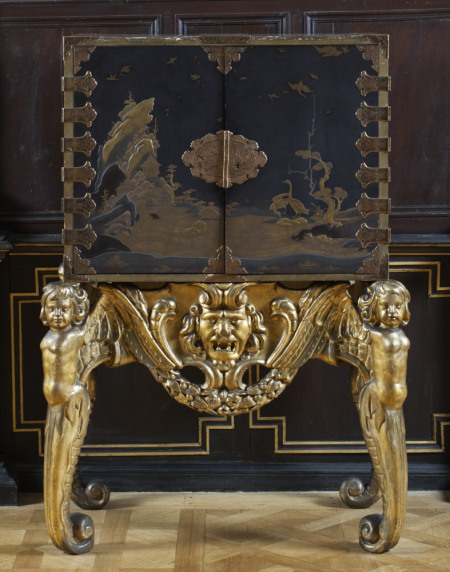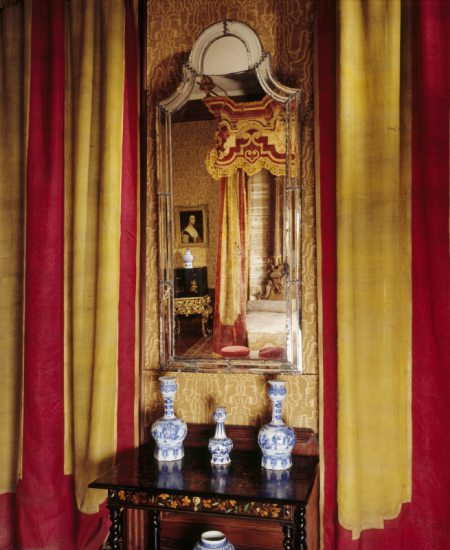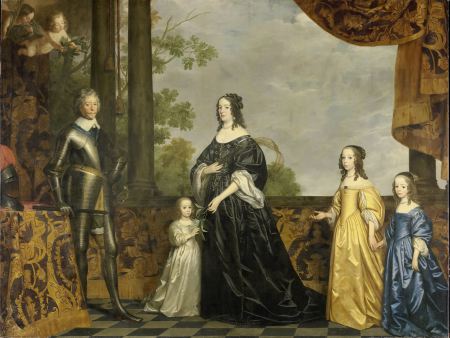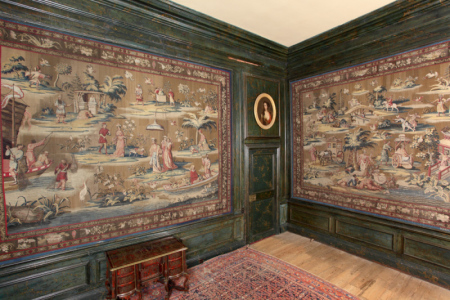Emlie de Bruijn, Registrar at the National Trust, is a heritage professional who uncovers many of the hidden gems found throughout the vast Trust collection. He documents and posts his latest findings through his blog National Trust Treasure Hunt. Emile has agreed to let Royal Oak share his posts here, on AngloFiles for you, our members. Sign up for Emile’s emails on his blog to stay connected with the latest findings in the National Trust’s collection.
Below, Emile announces an exciting opportunity for Royal Oak members in the north east area to explore a major exhibition that uncovers the impact of Asian influences on Dutch life in the seventeenth century.
By Emile de Bruijn

Japanese lacquer cabinet (c. 1650) on a Dutch gilt stand (c. 1675), at Ham House, Surrey, NT 1140084. ©National Trust Images/John Hammond
The Peabody Essex Museum in Salem, Massachusetts, is currently showing the major exhibition Asia in Amsterdam, about the impact of Asian luxuries on Dutch art and life in the seventeenth century. The museum is also organizing a public study day on the same topic, on Saturday 16 April.

A state bed in the style of Daniel Marot, a japanned cabinet, marquetry table and Delft glazed earthenware vases, in the Damask Bedchamber at Dyrham Park, Gloucestershire. ©National Trust Images/Andreas von Einsiedel
I will be giving a talk at this study day about what I am tentatively calling the Sino-Dutch interior in seventeenth-century England. There was quite a lot of Dutch cultural, influence in Britain at that time, with gardening styles, Delft pots and the occasional Prince of Orange being brought across the North Sea. As Amsterdam was probably the most important European entrepot for Asian goods, the Asian and the Dutch inevitably mingled in the English interior.

Group portrait of Frederik Hendrik, Prince of Orange, his wife Amalia van Solms and three of their daughters, by Gerard van Honthorst, c. 1647, Rijksmuseum, Amsterdam, inv. no. SK-A-874
As I am preparing my talk, I am becoming increasingly aware of the pivotal role of Amalia van Solms, the wife of Prince Frederik Hendrik of Orange. Frederik Hendrik was Stadtholder or ruler of most of the provinces of the Dutch Republic between 1625 and 1647.

Late-seventeenth-century tapestries inspired by Asian lacquer, made by the Soho workshop for Belton House, Lincolnshire, in about 1691, NT 436999. ©National Trust/Robert Thrift
Frederik Hendrik and Amalia projected an almost royal political and cultural aura, acquiring and decorating a number of residences. Amalia pioneered the practice of taking apart lacquer coffers and cabinets and using the panels as wall decoration, juxtaposed with liberal quantities of Asian porcelain.
This taste spread across Europe and influenced the subsequent history of chinoiserie and interior decoration in general. Without Amalia’s initial moment of creative destruction we would probably never have had Coco Chanel’s Coromandel rooms at her rue Cambon apartment.




